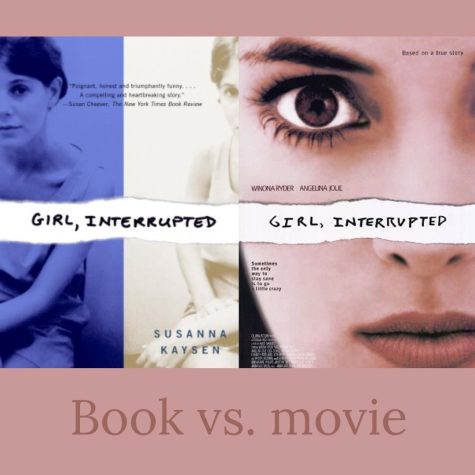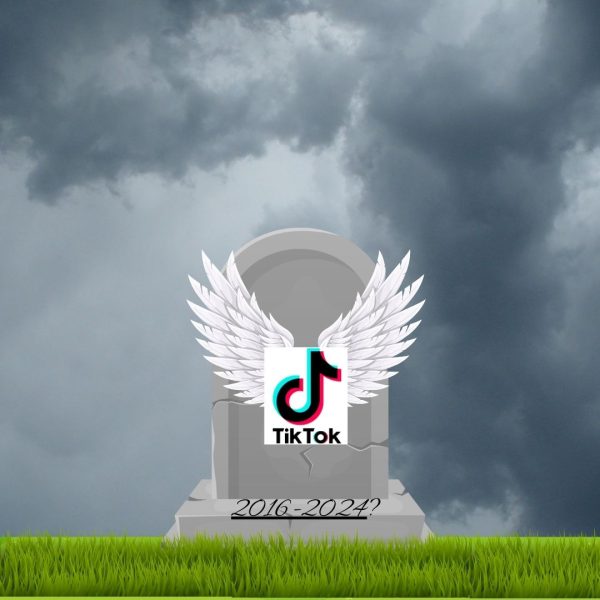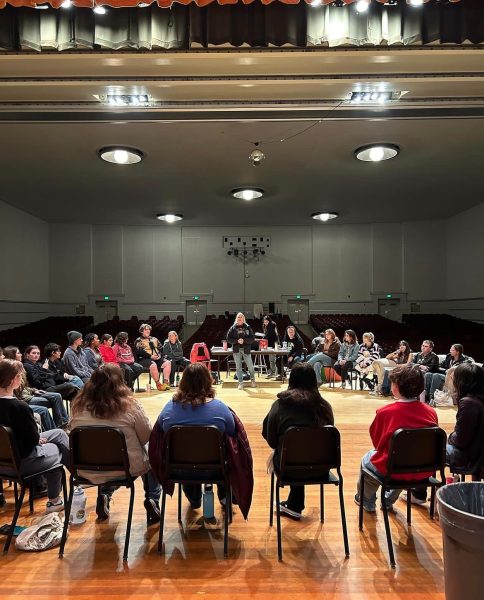Opinion: What is wrong with “Girl Interrupted”
“Girl Interrupted,” tackles important topics of mental illness and portrays the hardships that arise from being a teenage girl with mental health issues. Graphic by: Jane Armstrong
February 10, 2023
Mental illness depicted in movies can be revolutionary but over romanticized, why is that?
The romanticization of suffering and mental illness within our society today is prevalent. The need for validation and a sense of security has been rooted within our peers and us since we were children, and this movie has shown us just how correct that statement is.
“Girl Interrupted,” written by Susanna Kaysen in 1993, was adapted into a film in 1999 by James Mangold. This cult-classic film about mental health has become a staple in our movie lists, but that doesn’t mean that we don’t have our reservations. The film is based on a true story and the author’s personal experiences with being admitted to a psychiatric facility for her borderline personality disorder in the late 1960s. The 17-year-old main character, Susanna Kaysen, played by Winona Ryder, is admitted into a mental institution and is diagnosed with borderline personality disorder. Kaysen meets Lisa Rowe, played by Angelina Jolie, who has been at the institution for eight years and is a diagnosed sociopath. Susanna idolizes Lisa, and they get into a lot of trouble together.
The representation of mental illness lies within the movie’s characters. There is Janet, the anorexic, Cynthia with depression, Pretty Polly who was burned in a house fire and diagnosed with schizophrenia, Georgina a pathological liar, Daisy who suffers from OCD, an eating disorder and the post traumatic stress from her father’s sexual abuse. We are submerged in the lives of these girls within this mental institute, and we can’t do anything to help them.
Sloane Feingold ‘23 said, “[Girl, Interrupted] is one of my favorite movies, but there’s a lot of things that rub me the wrong way about how it depicts mental illness and life within mental asylums. It glamorizes mental illness and many girls end up looking up to a sociopath like Lisa Rowe, instead of seeing her faults and struggles as a real person.”

The film does a great job portraying the difficulties of understanding mental illness and how it affects each person uniquely. All of the girls in the film are young teenagers having to deal with the added struggles of mental illness to their already complicated lives. We get to see what life is like for these girls, who each see the world through such different lenses.
It is also important to remember the film is set in the 60’s. Whereas if this were to happen now, Susanna would have been hospitalized and treated for a brief period of time, in the 1960s it was considered more abnormal and constituted a lengthy stay at a mental institution. The film serves as a reminder of how poorly the mentally ill were treated then and how we should not treat someone any less human because of their mental health.
Avry Girstman ‘25 said, “I liked the movie a lot, but one of my main criticisms is the way it diagnosed people with homosexuality, like it’s a disorder. I know that this was set back then and that homosexuality wasn’t normalized, but I just hate that they made Cynthia feel crazy for the way she was.”
Susanna sums up all of these ideas perfectly in a defining quote from the movie, “Maybe I was really crazy, maybe it was the 60’s or just a girl, interrupted.” This encapsulates her feeling of being an outsider when mental health issues were not as normalized and the added struggles of being a teenage girl having to go through such a traumatic incident.





















